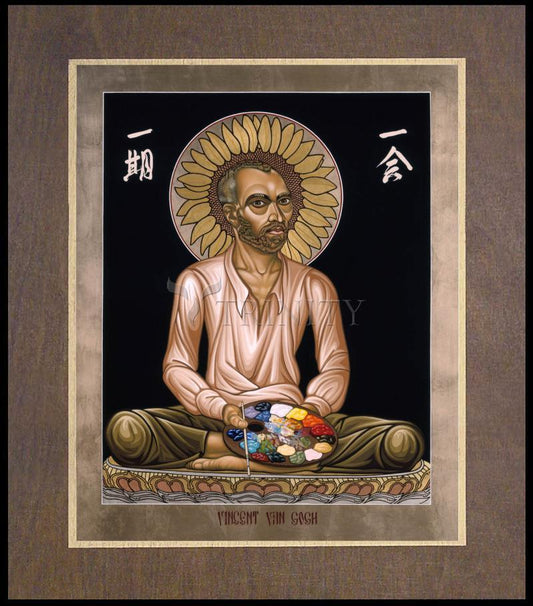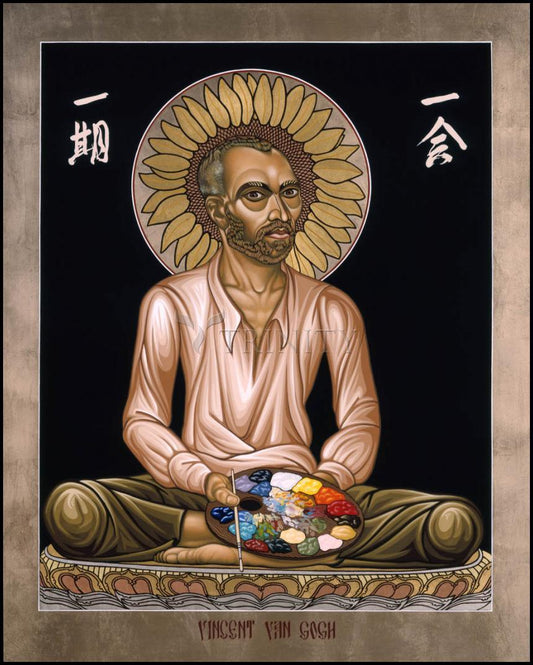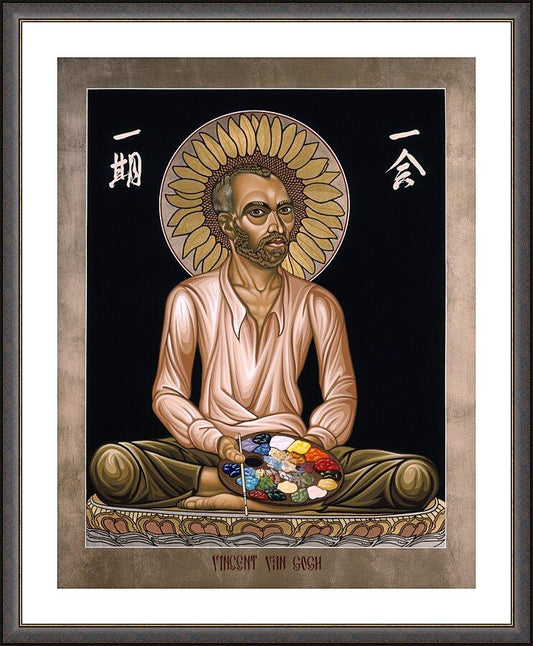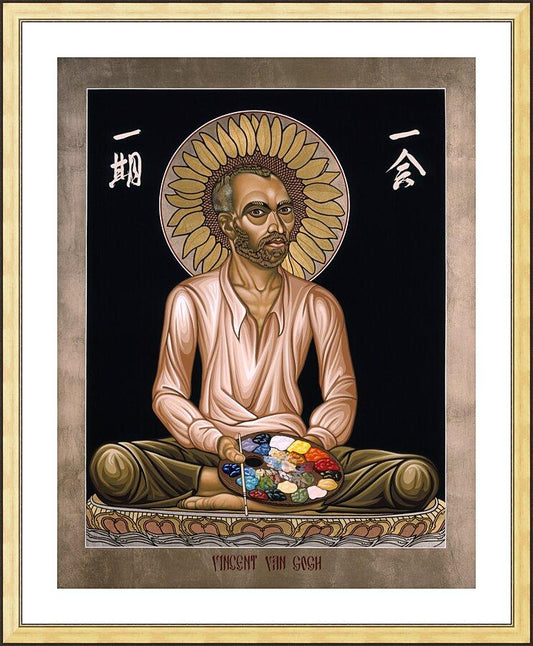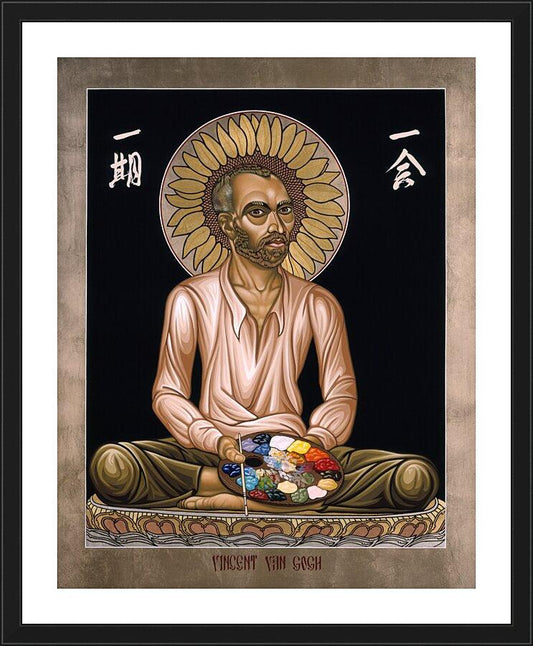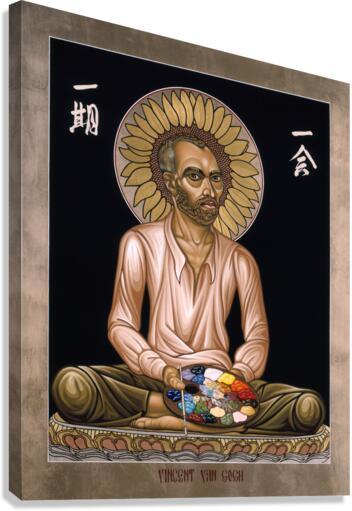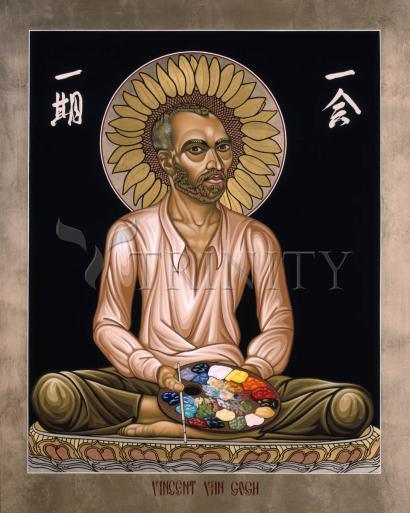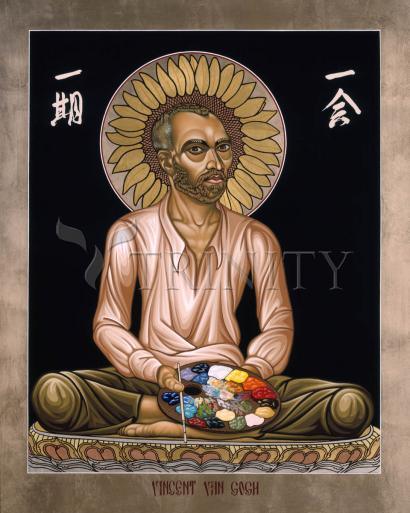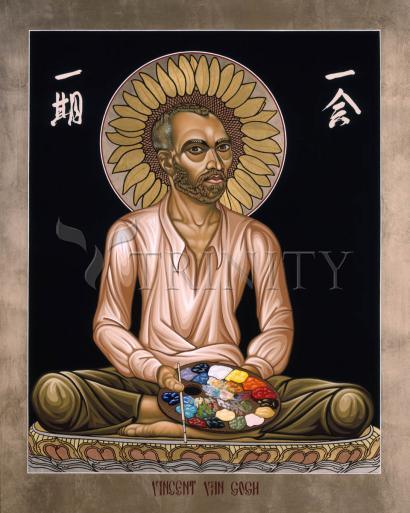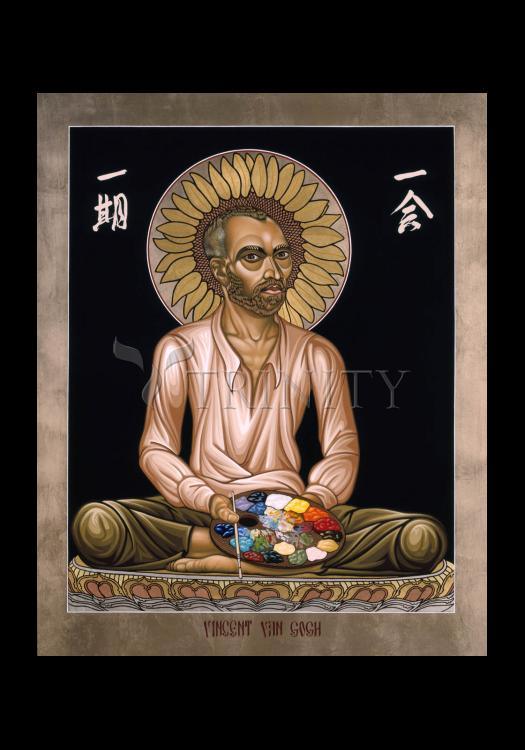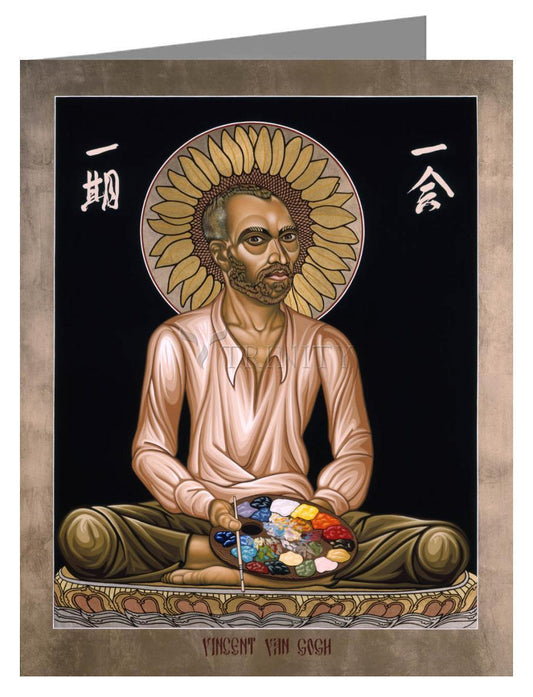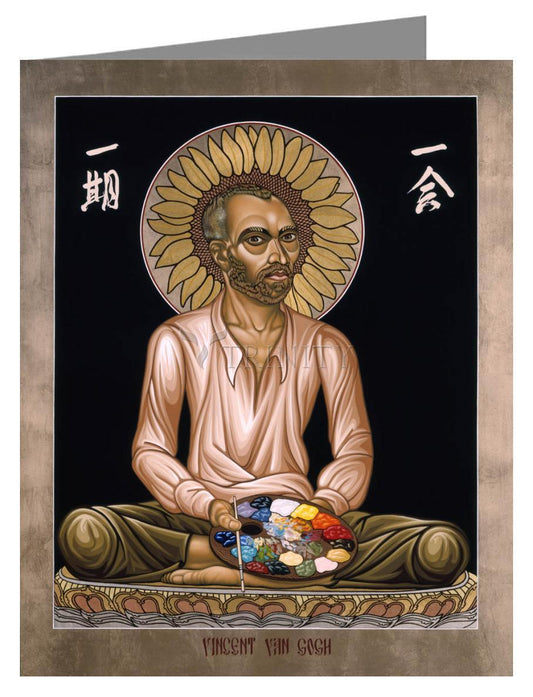Early Years
Vincent van Gogh was born in Groot Zundert, The Netherlands on 30 March 1853. Van Gogh's birth came one year to the day after his mother gave birth to a first, stillborn child -- also named Vincent. There has been much speculation about Vincent van Gogh suffering later psychological trauma as a result of being a "replacement child" and having a deceased brother with the same name and same birth date. This theory remains unsubstantiated, however, and there is no actual historical evidence to support it.
Van Gogh was the son of Theodorus van Gogh (1822-85), a pastor of the Dutch Reformed Church, and Anna Cornelia Carbentus (1819-1907). Unfortunately there is virtually no information about Vincent van Gogh's first ten years. Van Gogh attended a boarding school in Zevenbergen for two years and then went on to attend the King Willem II secondary school in Tilburg for two more. At that time, in 1868, Van Gogh left his studies at the age of 15 and never returned.
In 1869 Vincent van Gogh joined the firm Goupil & Cie., a firm of art dealers in The Hague. The Van Gogh family had long been associated with the art world -- Vincent's uncles, Cornelis ("Uncle Cor") and Vincent ("Uncle Cent"), were art dealers. His younger brother, Theo, spent his adult life working as an art dealer and, as a result, had a tremendous influence on Vincent's later career as an artist.
Vincent was relatively successful as an art dealer and stayed with Goupil & Cie. for seven more years. In 1873 he was transferred to the London branch of the company and quickly became enamored with the cultural climate of England. In late August, Vincent moved to 87 Hackford Road and boarded with Ursula Loyer and her daughter Eugenie. Vincent is said to have been romantically interested in Eugenie, but many early biographers mistakenly misname Eugenie for her mother, Ursula. To add to the decades-long confusion over the names, recent evidence suggests that Vincent wasn't in love with Eugenie at all, but rather a Dutch woman named Caroline Haanebeek. The truth remains inconclusive.
Vincent van Gogh would remain in London for two more years. During that time he visited the many art galleries and museums and became a great admirer of British writers such as George Eliot and Charles Dickens. Van Gogh was also a great admirer of the British engravers whose works illustrated such magazines as The Graphic. These illustrations inspired and influenced Van Gogh in his later life as an artist.
The relationship between Vincent and Goupil's became more strained as the years passed and in May of 1875 he was transferred to the Paris branch of the firm. It became clear as the year wore on that Vincent was no longer happy dealing in paintings that had little appeal for him in terms of his own personal tastes. Vincent left Goupil's in late March, 1876 and decided to return to England where his two years there had been, for the most part, very happy and rewarding.
In April Vincent van Gogh began teaching at Rev. William P. Stokes' school in Ramsgate. He was responsible for 24 boys between the ages of 10 and 14. His letters suggest that Vincent enjoyed teaching. After that he began teaching at another school for boys, this one lead by Rev. T. Slade Jones in Isleworth. In his spare time Van Gogh continued to visit galleries and admire the many great works of art he found there. He also devoted himself to his Bible study -- spending many hours reading and rereading the Gospel. The summer of 1876 was truly a time of religious transformation for Vincent van Gogh. Although raised in a religious family, it wasn't until this time that he seriously began to consider devoting his life to the Church.
As a means of making a transition from teacher to clergyman, Vincent requested that Rev. Jones give him more responsibilities specific to the clergy. Jones agreed and Vincent began to speak at prayer meetings held within the parish of Turnham Green. These talks served as a means of preparing Vincent for the task which he had long anticipated: his first Sunday sermon. Although Vincent was enthusiastic about his prospects as a minister, his sermons were somewhat lackluster and lifeless. Like his father, Vincent had a passion for preaching, but lacked a gripping and passionate delivery.
Undeterred, Vincent van Gogh chose to remain in The Netherlands after visiting his family over Christmas. After working briefly in a bookshop in Dordrecht in early 1877, Vincent left for Amsterdam on 9 May to prepare himself for the admission examination to the university where he was to study theology. Vincent received lessons in Greek, Latin and mathematics, but his lack of proficiency ultimately compelled him to abandon his studies after fifteen months. Vincent later described this period as "the worst time of my life". In November Vincent failed to qualify for the mission school in Laeken after a three month trial period. Never one to be swayed by adversity, Vincent van Gogh eventually made arrangements with the Church to begin a trial period preaching in one of the most inhospitable and impoverished regions in western Europe: the coal mining district of The Borinage, Belgium.
In January, 1879 Vincent began his duties preaching to the coal miners and their families in the mining village of Wasmes. Vincent felt a strong emotional attachment to the miners. He sympathized with their dreadful working conditions and did his best, as their spiritual leader, to ease the burden of their lives. Unfortunately, this altruistic desire would reach somewhat fanatical proportions when Vincent began to give away most of his food and clothing to the poverty-stricken people under his care.
Despite Vincent's noble intentions, representatives of the Church strongly disapproved of Van Gogh's asceticism and dismissed him from his post in July. Refusing to leave the area, Van Gogh moved to an adjacent village, Cuesmes, and remained there in abject poverty. For the next year Vincent struggled to live from day to day and, though not able to help the village people in any official capacity as a clergyman, he nevertheless chose to remain a member of their community. One day Vincent felt compelled to visit the home of Jules Breton, a French painter he greatly admired, so with only ten francs in his pocket he walked the entire 70 kilometers to Courrières, France, to see Breton. Upon arriving, however, Vincent was too timid to knock and returned to Cuesmes utterly discouraged.
It was then that Vincent began to draw the miners and their families, chronicling their harsh conditions. It was during this pivotal time that Vincent van Gogh chose his next and final career: as an artist.
Beginnings as an Artist
In autumn of 1880, after more than a year living as a pauper in the Borinage, Vincent left for Brussels to begin his art studies. Vincent was inspired to begin these studies as a result of financial help from his brother, Theo. Vincent and Theo had always been close as children and throughout most of their adult lives maintained an ongoing and poignantly revealing correspondence. It is these letters, in total more than 700 extant, which form most of our knowledge of Van Gogh's perceptions about his own life and works.
1881 would prove to be a turbulent year for Vincent van Gogh. Vincent applied for study at the Ecole des Beaux-Art in Brussels, although the biographers Hulsker and Tralbaut conflict with regards to the details. Tralbaut suggests a short and unremarkable tenure with the school, whereas Hulsker maintains that Vincent's application for admission was never accepted. Whatever the case, Vincent continued drawings lessons on his own, taking examples from such books as Travaux des champs by Jean-François Millet and Cours de dessin by Charles Bargue. In the summer Vincent was once again living with his parents, now situated in Etten, and during that time he met his cousin Cornelia Adriana Vos-Stricker (Kee). Kee (1846-1918) had been recently widowed and was raising a young son on her own.
Vincent fell in love with Kee and was devastated when she rejected his advances. The unfortunate episode concluded with one of the most memorable incidents in Van Gogh's life. After being spurned by Kee, Vincent decided to confront her at her parent's house. Kee's father refused to let Vincent see his daughter and Vincent, ever determined, put his hand over the funnel of an oil lamp, intentionally burning himself. Vincent's intent was to hold his hand over the flame until he was allowed to see Kee. Kee's father quickly defused the situation by simply blowing out the lamp and Vincent left the house humiliated.
Despite emotional setbacks with Kee and personal tensions with his father, Vincent found some encouragement from Anton Mauve (1838-88), his cousin by marriage. Mauve had established himself as a successful artist, and from his home in The Hague, supplied Vincent with his first set of watercolors -- thus giving Vincent his initial introduction to working in colors. Vincent was a great admirer of Mauve's works and was deeply grateful for any instruction that Mauve was able to provide. Their relationship was a pleasant one, but would suffer due to tensions brought about when Vincent began living with a prostitute.
Vincent van Gogh met Clasina Maria Hoornik (1850-1904) in late February 1882, in The Hague. Already pregnant with her second child when Van Gogh met her, this woman, known as "Sien", moved in with Vincent shortly afterward. Vincent lived with Sien for the next year and a half. Their relationship was a stormy one, partly due to both of their volatile personalities and also because of the strain of living in complete poverty.
Vincent's letters to Theo show him to be devoted to Sien and especially her children, but his art was always his first passion -- to the exclusion of all other concerns, including food. Sien and her children posed for dozens of drawings for Vincent, and his talents as an artist grew considerably during this period. His early, more primitive drawings of the coal miners in the Borinage made way for far more refined and emotion-laden works. In the drawing Sien, Sitting on a Basket, with a Girl, for example, Vincent masterfully depicts quiet domesticity, as well as an underlying sense of despair -- feelings which would truly define Van Gogh's 19 months living with Sien.
1883 was another year of transition for Van Gogh: both in his personal life and in his role as an artist. Vincent began to experiment with oil paints in 1882, but it wasn't until 1883 that he worked in this medium more and more frequently. As his drawing and painting skills advanced, his relationship with Sien deteriorated and they parted ways in September. As with his failure in The Borinage, Vincent would spend his time recovering from this failed relationship in isolation. With much regret, particularly because of his feelings for Sien's children, Vincent left The Hague in mid-September to travel to Drenthe, a somewhat desolate district in The Netherlands. For the next six weeks Vincent lived a rather nomadic life, moving throughout the region and drawing and painting the remote landscape and its inhabitants.
Once again, Vincent returned to his parents' home, now in Nuenen, in late 1883. Throughout the following year Vincent van Gogh continued to refine his craft. He produced dozens of paintings and drawings during this period: weavers, spinners and other portraits. The local peasants proved to be his favorite subjects -- in part because Van Gogh felt a strong affinity toward the poor working laborers and partly because he was such an admirer of the painter Millet who himself produced sensitive and compassionate paintings of workers in the fields. Vincent's romantic life took yet another dramatic and unhappy turn that summer. Margot Begemann (1841-1907), whose family lived next door to Vincent's parents, had been in love with Vincent, and the emotional upheaval of the relationship lead her to attempt suicide by poison. Vincent was greatly distraught over the incident. Margot eventually recovered, but the episode upset Vincent a great deal and he referred to it in his letters on a number of occasions.
Turning Point 1885: The First Great Works
In the early months of 1885 Van Gogh continued his series of portraits of peasants. Vincent viewed these as "studies", works which would continue to refine his craft in preparation for his most ambitious work to date. Vincent labored throughout March and April on these studies, briefly distracted from his work by the death of his father on 26 March. Vincent and his father had maintained a severely strained relationship over the last few years and, while certainly not happy about his father's death, Vincent was quite emotionally detached and continued his work.
All the years of hard work, of continually refining his technique and learning to work in new media -- all served as stepping stones toward the production of Vincent van Gogh's first great painting: The Potato Eaters.
Vincent worked on The Potato Eaters throughout April of 1885. He had produced various drafts in preparation of the final, large oil on canvas version. The Potato Eaters is acknowledged to be Vincent van Gogh's first true masterpiece and he was encouraged by the outcome. Although angered and upset by any criticism of the work (Vincent's friend and fellow artist, Anthon van Rappard (1858-1892), disliked the work and his comments would prompt Vincent to end their friendship), Vincent was pleased with the result and thus began a new, more confident and technically accomplished phase of his career.
Van Gogh continued to work throughout 1885, but once again became restless and in need of new stimulation. He enrolled briefly in the Academy in Antwerp in early 1886, but left it about four weeks later feeling stifled by the narrow and rigid approach of the instructors. As he demonstrated frequently throughout his life, Vincent felt that formal study was a poor substitute for practical work. Vincent had worked for five difficult years to hone his talents as an artist and with the creation of The Potato Eaters he proved himself a first-rate painter. But Vincent continually sought to better himself, to acquire new ideas and explore new techniques as a means of becoming the artist he truly aspired to be. In The Netherlands he had accomplished as much as he could. It was now time to explore new horizons and begin a journey which would further refine his craft. Vincent left The Netherlands to find the answers in Paris... and in the company of the Impressionists.
—Excerpts from Vincent and Theo Van Gogh: A Dual Biography by Jan Hulsker



